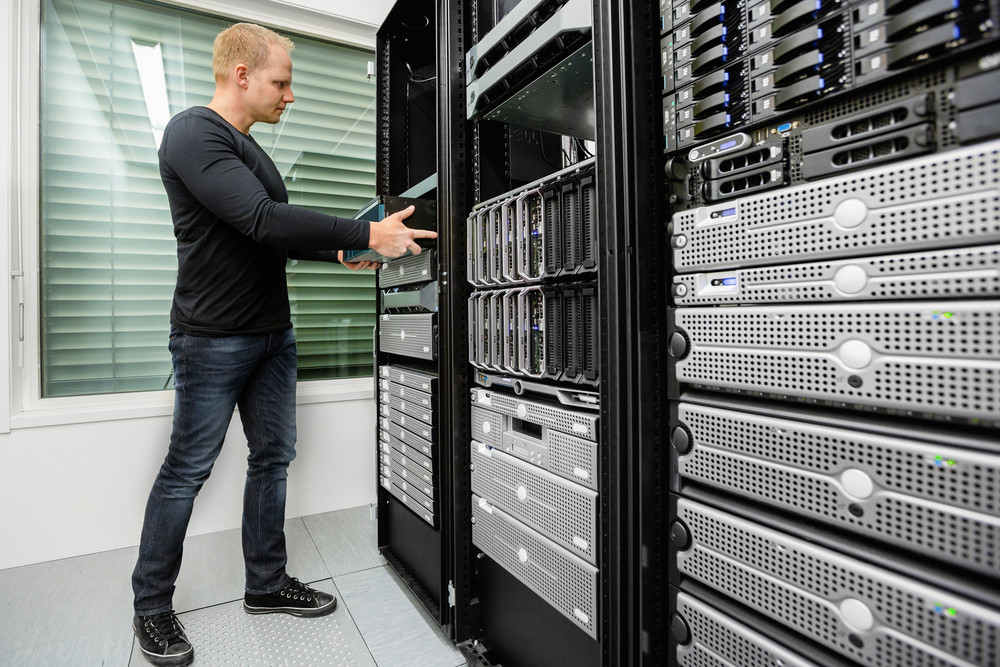
Working from home.
Masks when you transition back into the office.
Essential workers only in the cubicles.
Months long reductions in salaries.
More detailed office cleaning protocols.
The list of changes at work go on and on. And just when you have become accustomed to a new set of guidelines you find out that there are now other policies and procedures that will be put in place.
If you work in the banking industry, however, you realize that even though the lobbies may remain closed or only available by appointment only that the processing of transactions remains one of the most essential parts of keeping the economy running. The fact of the matter is, any time a card is swiped, both retailers and consumers rely on successful electronic transactions. And behind everyone of these transactions is a complicated system of cold and hot aisle containment solutions, various types of server racks, and data cabinets. For example, around the time that the first set of stimulus checks were distributed to Americans, these hot aisle containment solutions were running more transactions than is normal for even the day after Thanksgiving shopping sales. As card holders across the country began checkin their online account balances not just once, but several times a day to see if they had received the promised money, the amount of traffic that was accessing the digital information that was stored in hot aisle containment solutions was historic.
Load Ratings for Data Racks and Traffic Percentages for Data Servers Remain Essential to the Economy
In a time when the U.S. Mint has stopped or slowed production because of the pandemic some Americans are beginning to realize what a cashless society might look like. And as retailers are asking for exact change or card swipes as often as possible, there are many retailers who are simply offering gift cards loaded with the change that needs to be given to consumers. Every one of these card swipes, of course, relies on an accurate accounting of what funds available. And in the world of banking and other kinds of electronic transactions, everyone of these card swipes leads back to cold or hot aisle containment solutions. Data centers both large and small are necessary parts of the digital world we now live in.
The latest research indicates that as many as 82% of companies reportedly saved money by moving to the cloud. These transitions to cloud storage, however, rely on the services and storage provided by data centers. For while so many people love to throw the phrase the cloud around, there is actually a real life, physical data center that is required for all of this digital data. Managed by a team of professionals, these data centers are, in turn, only as effective as the physical rooms where servers are located. For example, more than 65% of IT equipment failures are directly attributed to inadequate, poorly maintained or failed air conditioning in the server room. The careful positioning of hot and cold aisles also play unimportant role in making sure that air conditioning systems can operate effectively and maintain the climate that is needed to protect these expensive servers.
Cooling Costs Are Significant in Data Centers of All Sizes
As advancements in technology continue, it should come as no surprise that data centers more than seven years old are considered out of date as per Green Computing norms. In practice, however, the average life of a data center is considered to be nine years. And based on current electricity price increases and the carbon levy this cost could rise by as much as 67% in the next three years. For this reason, air conditioning efficiency improvements can reduce these energy costs by up to 35%. As a result, 80% of data centers employ or are looking into installing hot or cold aisle containment systems to keep servers at the correct temperatures and reduce unnecessary energy use.
Most consumers may not realize that the card swipe they use to purchase groceries or gas are part of a data center that has the power density that is 100 times more than that of a large commercial office building and is equivalent to nine, small sized shopping malls, but it is true.


